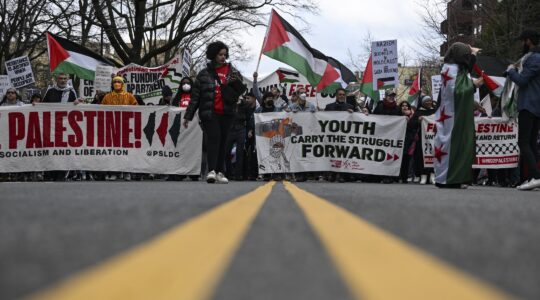NEW YORK (JTA) — As they prepare to offer loved ones Rosh Hashanah wishes, many people in the Jewish nonprofit world would probably like to wish away 5769.
At this time last year, most economists were aware the recession was on our doorsteps. The financial institutions Bear Stearns and Lehman Brothers already had collapsed, the housing market was in the tank and joblessness was on the rise.
Nonprofits also had gone from anxious to red alert by the time the High Holidays hit.
Yet somehow, the situation worsened.
In 2009, according to a recent Foundation Center survey of more than 1,200 foundations, overall foundation giving is expected to decrease from the high single digits to low double digits, and nearly half of the surveyed foundations predict reductions in the number and size of their grants. A substantial share (44 percent) also anticipate reducing the number of multi-year grants.
Guidestar, a nonprofit watchdog, also detected alarming trends in its survey of more than 1,000 nonprofits between October and February.
More than half of the organizations experienced a decrease in contributions, and about a third of grant makers gave less in grants over the five-month period. Of the organizations that have sliced their budgets, the majority are making ends meet by cutting services and freezing staff salaries, and 30 percent have resorted to layoffs. Eight percent said they were in danger of closing down.
In the Jewish nonprofit community, similar signs of philanthropic recession have been clear. Even the strongest nonprofits have been hit hard.
The largest foundation, the Harry and Jeanette Weinberg Foundation, lost 13 percent of its assets, or $300 million, in the past year. The foundation, with 60 percent of its money invested in the plunging stock market, dropped from $2.3 billion to $2 billion, and its allocations over the next two years will total about $40 million less than foundation officials had anticipated before the recession.
Birthright Israel reduced its budget from $110 million in 2008 to $75 million in 2009, and its supporting foundation is revamping how it raises money, shifting toward a more grass-roots approach focused on smaller donations.
The fund raising of the UJA-Federation of New York is down 11 percent. The federation in Boston will cut its allocations by 15 percent. The MetroWest federation in New Jersey has a $3 million shortfall. Federations across the board are cutting back. The UJC/Jewish Federations of North America cut staff twice in the last year and had to slash its budget from $37 million to slightly above $30 million.
The Jewish Agency for Israel has had to cut $80 million from its budget thus far. The American Jewish Joint Distribution Committee is facing a $40 million budget cut. It let go 40 staffers in May and will cut more this year.
The alphabet soup of the Jewish world has laid off hundreds and hundreds of employees; nearly every organization has had to let go of staff.
And that’s before we even get to Bernard Madoff and his $65 billion swindle, which completely wiped out several foundations and took a major chunk from the endowments of several institutions and organizations.
What the long-term effect will be on Jewish charity remains to be seen.
A philanthropy insider who worked for a foundation that was closed because of Madoff’s scheme predicted that the Jewish community would lose more than $2 billion a year in charitable donations for the next five years. Conversely, the chief fund-raiser from a $300 million-a-year Jewish organization said he had yet to hear one donor say he or she could not give because of Madoff losses.
Despite the carnage, there may be a silver lining: The current crisis is forcing communal leaders to figure out how to build a more sustainable nonprofit system.
It had become clear that over the past 15 to 20 years of unprecedented wealth, the Jewish community has built up a system that may have not been sustainable even if the good times had never ebbed.
The most glaring example is the day school system.
Day schools are perhaps the best Jewish identity-building initiative, but tuition costs have been rising, and an increasing number of observers and families have complained for some time that the system was just too expensive.
Similar arguments could and have been made about many sectors of the Jewish nonprofit world, from camps to social service agencies to synagogues.
Yet before the economy hit the skids, few organizations and institutions felt the need to take a hard look at whether there was room to reduce their costs and reorient their strategic directions.
Now they are being forced to sit down and take that look.





